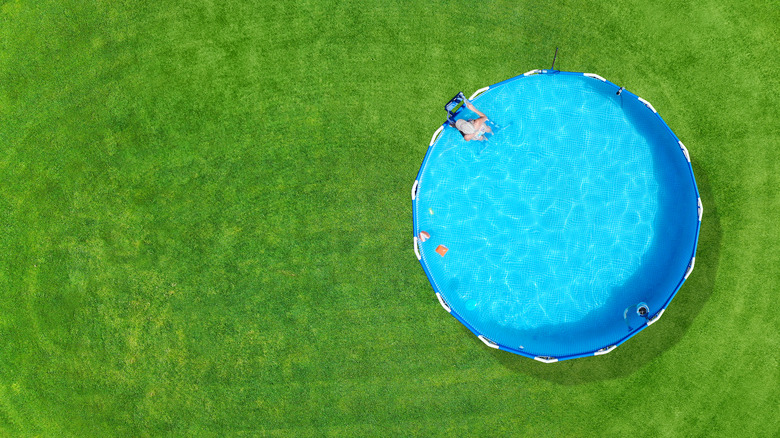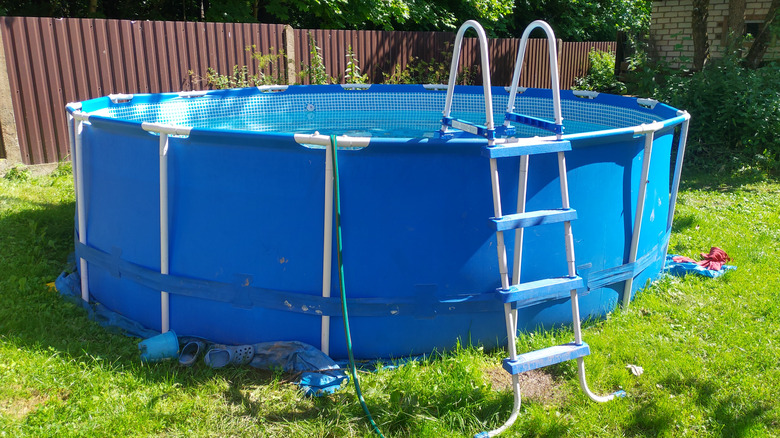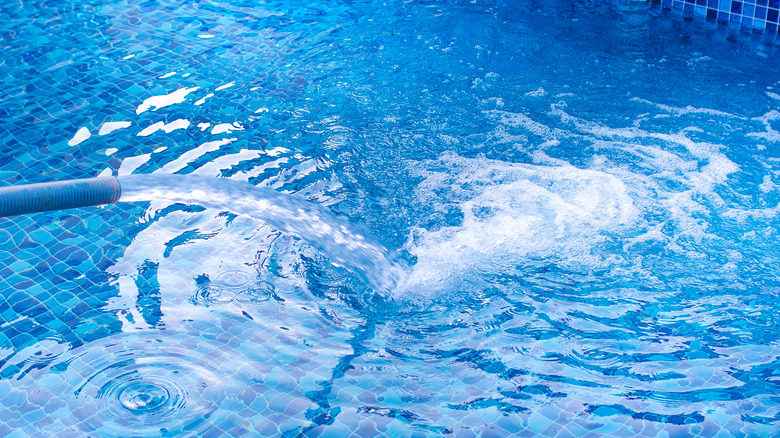How Much Water Do You Need To Fill A Swimming Pool?
There are more than a few variables when it comes to filling a pool. Unfortunately, you can't just guesstimate, and it's more than just turning on your hose and letting it flow.
First, you'll need to make sure that you have a location suitable for a pool. Once you've cleared that all up, you'll need to skedaddle over to city hall (and your HOA, if you live in a condo, townhome, or apartment) to make sure there are no rules or regulations in place surrounding your new pool installation.
Next comes the fun part: the pool type, shape, and size. These are the biggest factors in determining how much water you'll actually need to fill that huge, empty void; because too much or too little can put you in some dire pool straits. The last thing you want to experience after not only dropping a large sum of money — but also dealing with government officials, paperwork, construction (and everything else in between) — is to jump into your new water respite and realize that something's just not quite right.
It's all about the pool volume
The amount of water you'll need to fill your pool depends entirely on its size, shape, and volume. To figure out the volume, you'll just need to get the length, width, and depth at the deepest and shallowest points. Once you've taken the measurements, the easiest way to calculate the volume (in gallons) is by using a simple online calculator.
For example, Good Calculators takes its pool volume calculations up a notch by adding seven different pool sizes: square, rectangle, kidney, round, trapezoid, triangle, and oval. Plugging in some numbers, a 15-foot round pool with a wall height of 48 inches will need approximately 5,300 gallons of water (rounded up) to fill it. The same-sized pool with a wall height of 52 inches will require about 500 gallons more.
On a side note, above-ground pools tend to be smaller and have less volume than their built-in brethren. They also generally keep to a round or oval shape. Note that round pools, unlike oval-shaped pools, aren't constructed with a buttress system, and because of a round pool's circular symmetry, the water is more evenly distributed.
Avoid over or under filling the pool
The best way to make sure your pool's at the ideal water level is to do a daily skimmer box check citation. This is part of the filtration system that keeps the surface of the water clean and free from detritus, bugs, and other things that shouldn't be in there. If the water is above the skimmer box opening, then it's not able to effectively clean your pool. But if the water is too low, then you risk burning out the motor on your water pump, which can be a costly mistake. The same can be applied to above-ground pools.
If you haven't thought about how you're planning on actually filling your pool, there are a couple of options. According to Medallion Energy, the fastest way to enjoy your new pool is to hire a company to truck in water. The second option is to use your standard garden hose, which will require patience on your part, but it can also potentially save you some serious dollars. Sometimes you can even get written approval from your local government to use a nearby fire hydrant (with professional assistance, of course). But keep in mind that if you live in an area affected by drought, be smart about your water usage.


